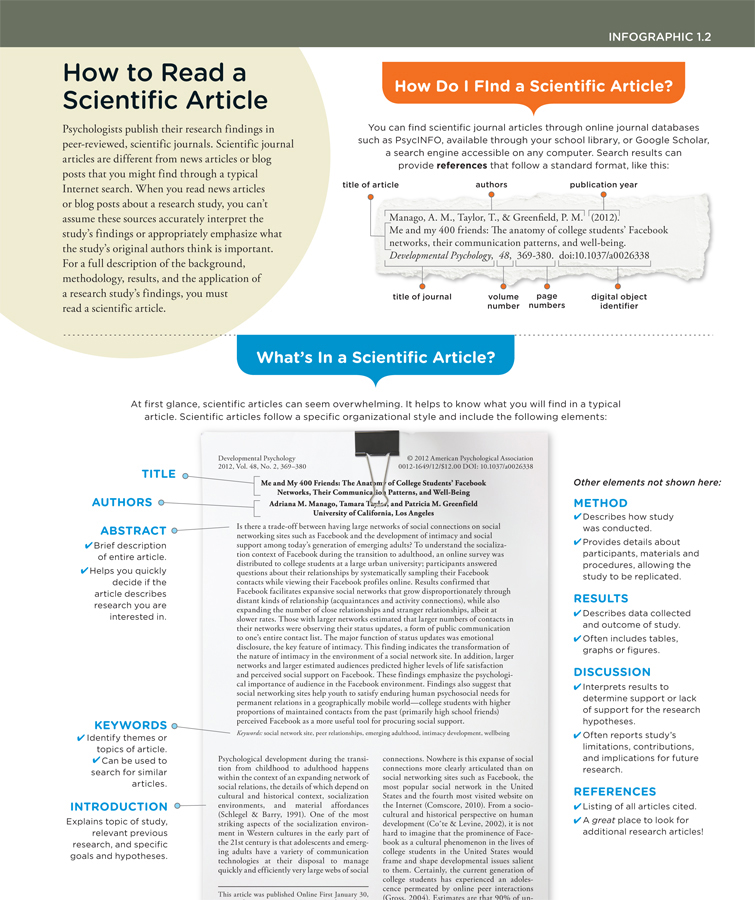Chapter 1. How To Read a Scientific Article
Infographic
Psychologists publish their research findings in peer-reviewed, scientific journals. Scientific journal articles are different from news articles or blog posts that you might find through a typical Internet search. When you read news articles or blog posts about a research study, you can’t assume these sources accurately interpret the study’s findings or appropriately emphasize what the study’s original authors think is important. For a full description of the background, methodology, results, and the application of a research study’s findings, you must read a scientific article.

1.1 Quiz
QUESTION: In a full citation of an article found in a professional psychology journal, which of the following pieces of information would appear first?
1.2 Quiz
QUESTION: Dr. Phillipi is writing an article to be published in the Journal of Professional Psychology. She knows that as part of this article she will have to provide a brief description of the entire article, and that this description will be found at the start of her paper. What is this brief description called?
1.3 Quiz
QUESTION: In which of the following sections of a professional journal article would you be most likely to find ideas for additional research articles on the topic you’ve just read about?
1.4 Quiz
QUESTION: The reference for a complete journal article follows a specific format. Which of the following pieces of information is not found in such a reference?
1.5 Quiz
QUESTION: You are writing an article that will summarize the research you have done in your particular field of psychology. There is a lot of data to present, and you have decided to do so using a series of charts and graphs so that the reader will have all of that information in one place. In which section of a standard scientific article would these graphs and charts be most likely to appear?